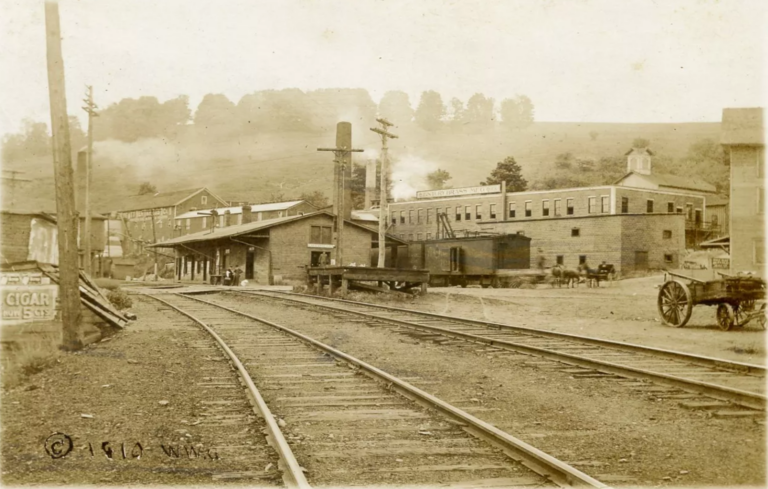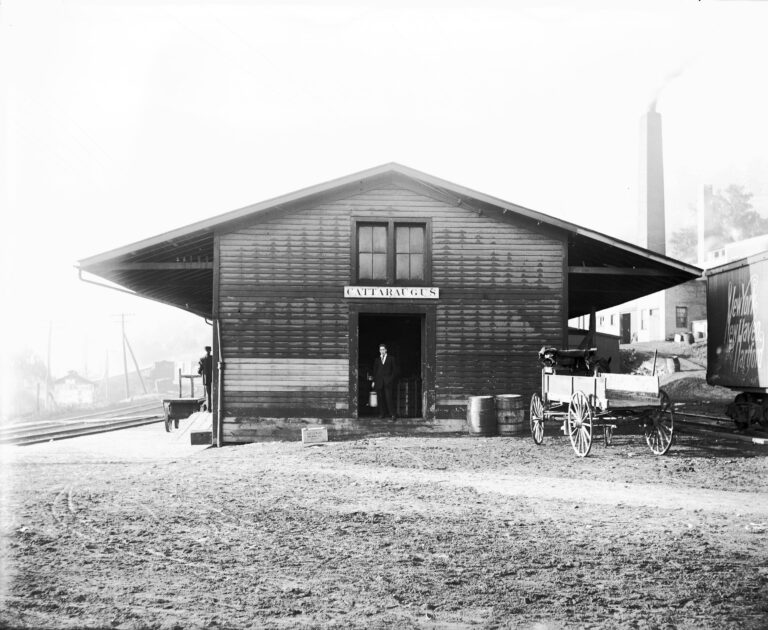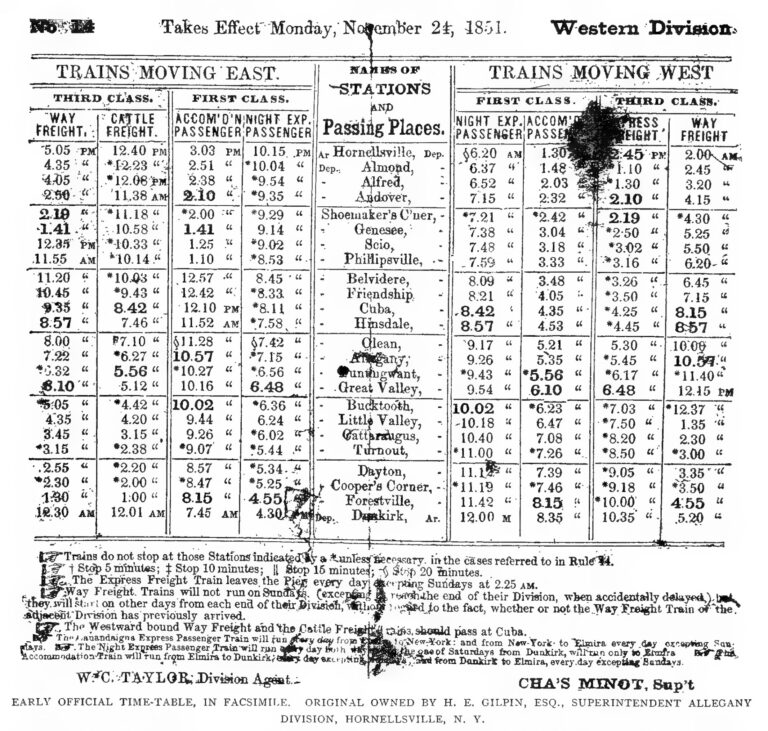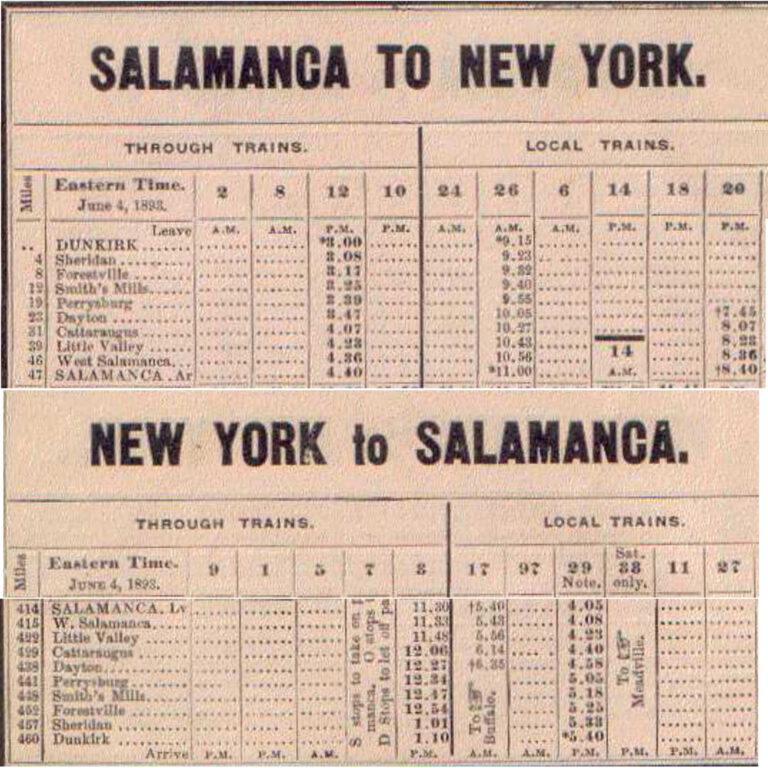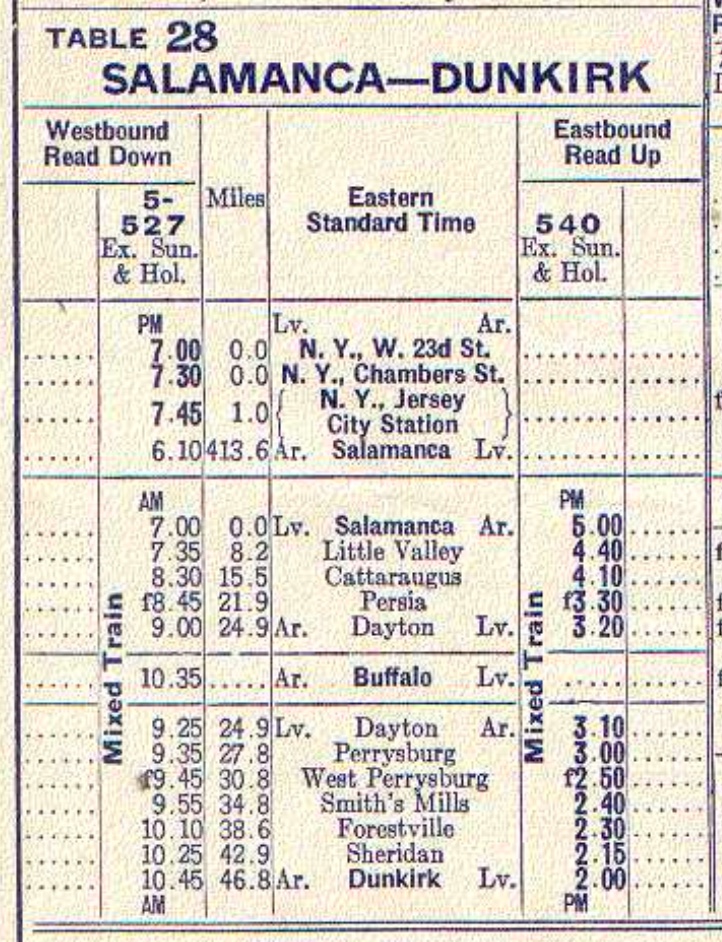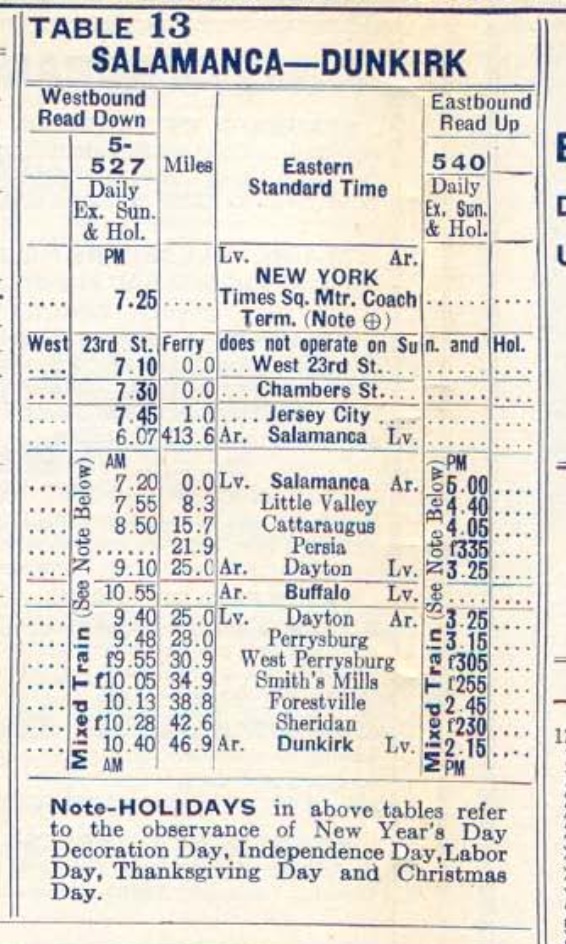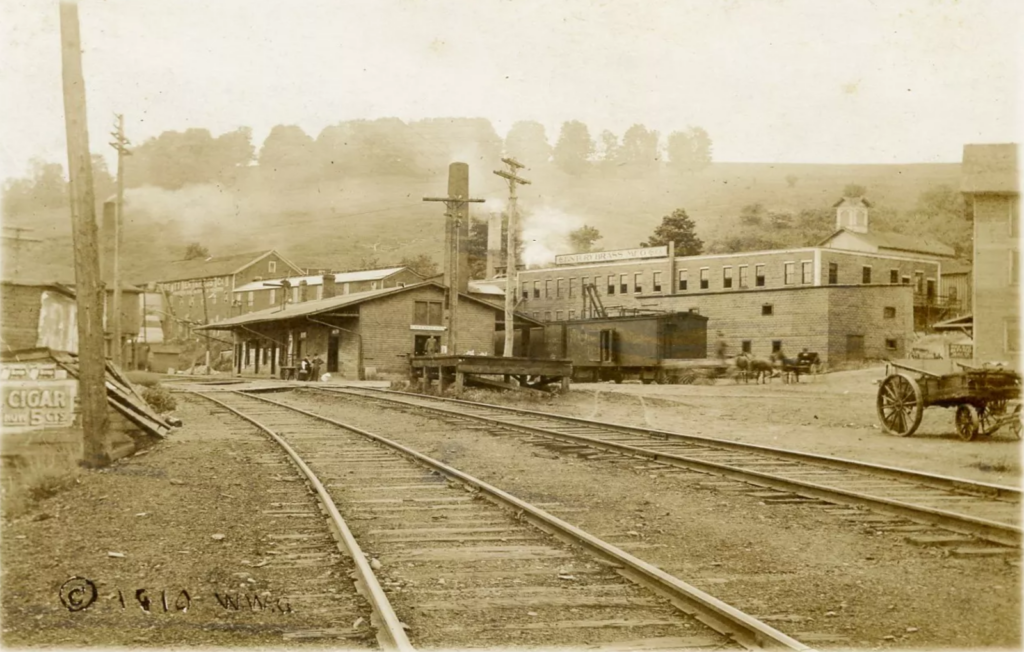
Cattaraugus is a village on the original main line of the Erie Railroad about thirty (railroad) miles east of Dunkirk, NY.
This line was operated by the New York and Erie Rail Road (1851 – 1861), the Erie Railway (1861 – 1878), the New York, Lake Erie and Western Railroad Company (1878 – 1895), the Erie Railroad (1895 – 1960), the Erie Lackawanna Railroad (1960 – 1976), the Consolidated Rail Company (Conrail) (1976 – 1978) and the New York and Lake Erie Railroad (1978 – 1990).
The section from Cattaraugus westward to Dayton went out of service in 1970 due to a washout on the line and the section from Cattaraugus eastward to Salamanca was transferred to the New York and Lake Erie Railroad in 1978 and abandoned in 1990. That section is now part of the 12-mile Pat McGee Trail that was opened in 2005 for hiking, biking, and snowmobiling.
History
The Historic Village of Cattaraugus web site describes the founding of the village in the late 1840s when the New York and Erie Railroad was built through the area:
In a last minute change in course, this railroad came through Rich Valley. The new rail town was not planned as other communities were along the line. It was not settled. It was not founded. It just happened!! The new village was quickly carved out of thick virgin forest. Three large crews of men were needed to cut trees, pull stumps, cut rails, construct massive stone culverts and excavate hillsides throughout the area. This involved intense manual labor and skilled stone masons many of whom apprenticed on the Erie Canal construction. Hard drinking Irishmen from County Cork, Ireland dominated the three work crews who were uprooted from other areas and suddenly and unexpectedly sent to set up housekeeping and small businesses next to the railroad tracks being constructed. The “Corkonians” set up their community in an area they called the “Patch” (as in “potato patch”) on the north side of the tracks in the midst of what is now Cattaraugus Village. Some of their names were Carroll, Kelley, Crowley, Sweeney, and McCarthy. “Far Downers” were another separate Irish work crew that came from the southwest of Ireland and who spoke Gaelic. And then there was the German work crew. They kept to themselves and avoided the Irish fighting each other. The first telegraph line was installed in 1849 to provide communication facilities between construction crews.
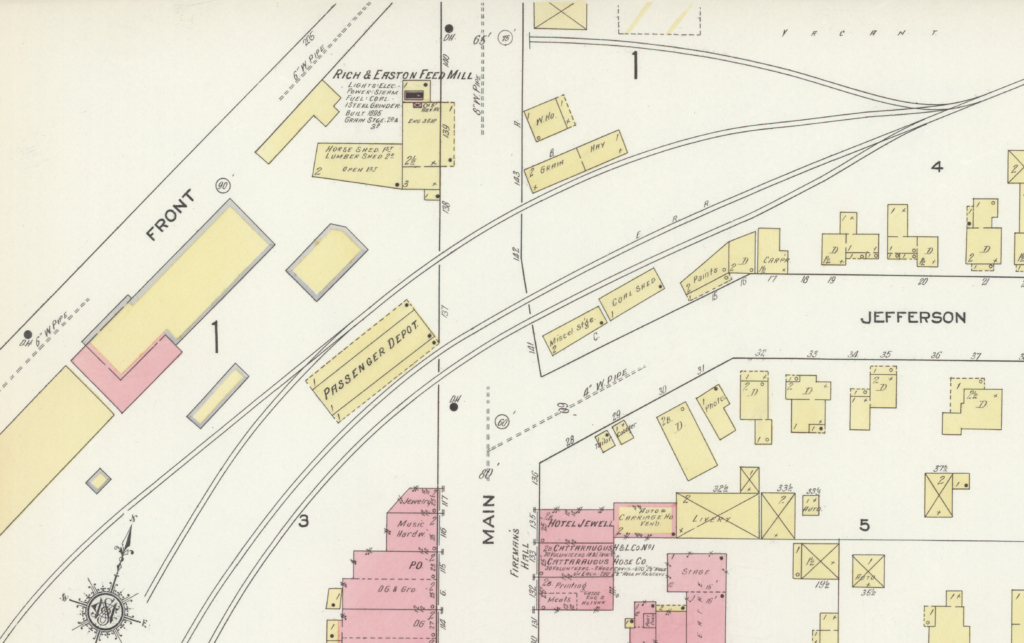
Clippings
Station Photographs
Other Photographs
Maps
Timetables
Learn More
- Historic Village of Cattaraugus website.
